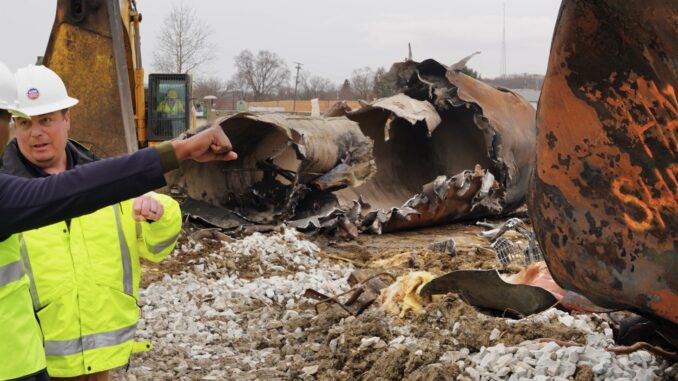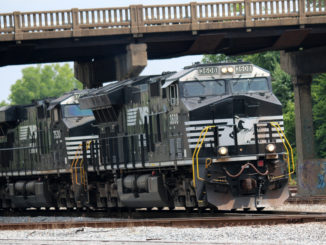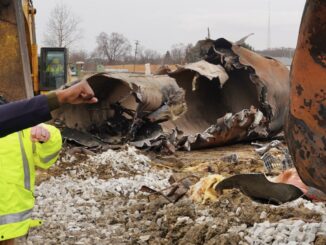
(The Center Square) – The Ohio Railroad Association opposes three new legislative proposals state lawmakers recently introduced and say will make railways across the state safer.
The three are part of several changes to a transportation budget bill and come in the wake of the Feb. 3 train derailment in East Palestine, Ohio that continues to create concern among residents after a hazardous chemical release.
House Democrats proposed the changes in a letter to House Finance Committee Chairman Rep. Jay Edwards, R-Nelsonville. It outlined six proposed changes including:
- requiring at least a two-person crew on trains;
- requiring the Public Utilities Commission of Ohio to ensure wayside detector systems are effective and up-to-date;
- establishing rail yard lighting and walkway safety requirements;
- establishing a railway safety zone;
- increasing funding for the Ohio Rail Development Commission to $15 million each year; and
- requiring rail companies to report to the PUCO when railroads block crossings.
“The safe operation of freight and passenger trains is also vital to commerce, and we support efforts to keep train operations safe in the state of Ohio. It is imperative to ensure the safe movement of freight trains because freight trains transport time-sensitive commodities, including toxic and dangerous chemicals, through every region of Ohio,” Rep. Michael Skindell, D-Lakewood, ranking member of the House Finance Subcommittee on Transportation, said. “The manner in which railroad companies carry out operations has a profound impact on keeping our communities and railroad workers safe.”
In testimony, Ohio Railroad Association Executive Director Art Arnold voiced opposition to mandatory crew sizes, PUCO’s inspection and approval of monitoring devices and reporting when trains block crossings.
He said all three are unconstitutional and preempted by federal law.
“We encourage the removal of the identified proposals in the substitute bill and offer support for the other rail-related language in the bill, as we have previously testified,” Arnold said.
On Thursday, the NTSB said the failure of wheel bearings that reached more than 250-degrees caused the derailment, but its investigation could take up to 18 months.
Late Thursday, Gov. Mike DeWine issued the most recent update on East Palestine, saying no contaminants associated with the derailment were found in the air on 20 air monitors in the area. Also, East Palestine’s municipal water was free of contaminants associated with the derailment.
The Ohio Department of Natural Resources reported the vast majority of aquatic species killed by the derailment were 1- to-3-inch minnows. All are believed to have been killed in the first 24 hours following the crash. ODNR says there is currently no immediate threat to minnows, fish, or other aquatic species. ODNR also reported live fish have returned to Leslie Run.
Norfolk Southern began the process of removing contaminated soil from the site, moving by dump truck to a hazardous waste disposal facility in Michigan.
A total of 1.7 million gallons of contaminated liquid has also been removed. Of this, 1.1 million gallons have been hauled off-site, with most going to Texas Molecular, a hazardous waste disposal facility in Texas. A smaller amount of waste has been directed to Vickery Environmental in Vickery, Ohio.




